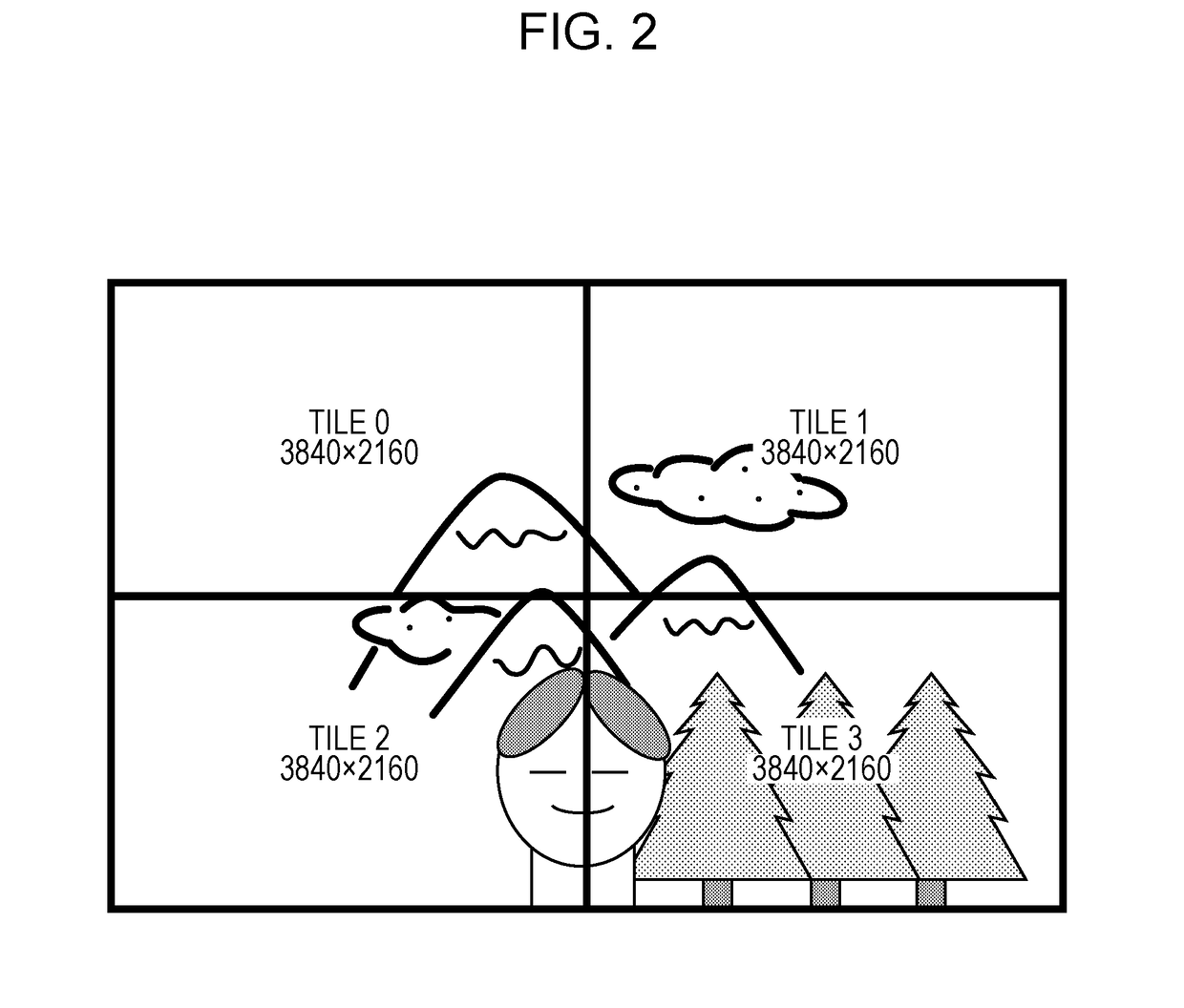Image encoding apparatus, method of image encoding, and recording medium, image decoding apparatus, method of image decoding, and recording medium
a technology of image encoding and encoding methods, applied in the field of image encoding apparatus, image encoding apparatus, image decoding apparatus, and recording medium, can solve the problems of reducing encoding efficiency, complicated control of parallel processing, and inability to perform parallel processing, so as to enhance the parallelism of processes and achieve high-speed encoding
- Summary
- Abstract
- Description
- Claims
- Application Information
AI Technical Summary
Benefits of technology
Problems solved by technology
Method used
Image
Examples
first embodiment
[0039]In an image encoding format to be decoded by an image decoding apparatus according to a first embodiment of the present invention, one frame is divided into a plurality of tiles that are rectangular regions. FIG. 2 illustrates tile arrangement in the first embodiment. Referring to FIG. 2, a frame of 7680 horizontal pixels×4320 vertical pixels is divided into four tiles arranged in an array of two horizontal tiles×two vertical tiles. In the encoding format in the present invention, each block is composed of 16 horizontal pixels×16 vertical pixels and encoding or decoding is performed on a block-by-block basis. Although each block is composed of 16×16 pixels in the present embodiment, the present invention is not limited thereto. Each block may be composed of 32×32 pixels or 64×64 pixels. The size of each tile is a multiple of the size of the block. In FIG. 2, each tile is composed of 240 horizontal blocks×135 vertical blocks. The tile is further divided into a plurality of bloc...
second embodiment
[0081]In an image encoding format to be decoded by an image decoding apparatus according to a second embodiment of the present invention, one frame is divided into a plurality of tiles that are rectangular regions in the same way as in the first embodiment. Since tile arrangement in the second embodiment is the same as that in the first embodiment illustrated in FIG. 2, explanation is omitted.
[0082]FIG. 10 illustrates a format of HEVC-encoded data in the present embodiment. The encoded data of FIG. 10 is the same as that in the first embodiment, except for the slice header. Accordingly, only the slice header will be described below. In FIG. 10, when the flag TileFlag has a value of 1 or the flag WPPFlag has a value of 1, the slice header includes, as position information, a syntax element num_entry_point_offsets and syntax elements entry_point_offset.
[0083]If the flag TileFlag has a value of 1 and the flag WPPFlag has a value of 0, this means that the frame has been divided into a p...
third embodiment
[0098]In an image encoding format for encoding by an image encoding apparatus according to a third embodiment of the present invention, one frame is divided into a plurality of tiles that are rectangular regions in the same way as in the first embodiment. Since tile arrangement in the third embodiment is the same as that in FIG. 2 in the first embodiment, explanation is omitted. Note that the tile arrangement is not limited to that in FIG. 2.
[0099]Although FIG. 1 illustrates the format of an HEVC-encoded stream in the present embodiment, explanation is omitted because it is the same as that in the first embodiment. FIG. 13 illustrates a configuration of the image encoding apparatus for generating an encoded stream in the image encoding format.
[0100]Referring to FIG. 13, a tile selector 1301 is configured to determine whether a target block belongs to an even-numbered tile. If the block belongs to an even-numbered tile, the tile selector 1301 outputs data of the block to a first tile...
PUM
 Login to View More
Login to View More Abstract
Description
Claims
Application Information
 Login to View More
Login to View More - R&D
- Intellectual Property
- Life Sciences
- Materials
- Tech Scout
- Unparalleled Data Quality
- Higher Quality Content
- 60% Fewer Hallucinations
Browse by: Latest US Patents, China's latest patents, Technical Efficacy Thesaurus, Application Domain, Technology Topic, Popular Technical Reports.
© 2025 PatSnap. All rights reserved.Legal|Privacy policy|Modern Slavery Act Transparency Statement|Sitemap|About US| Contact US: help@patsnap.com



